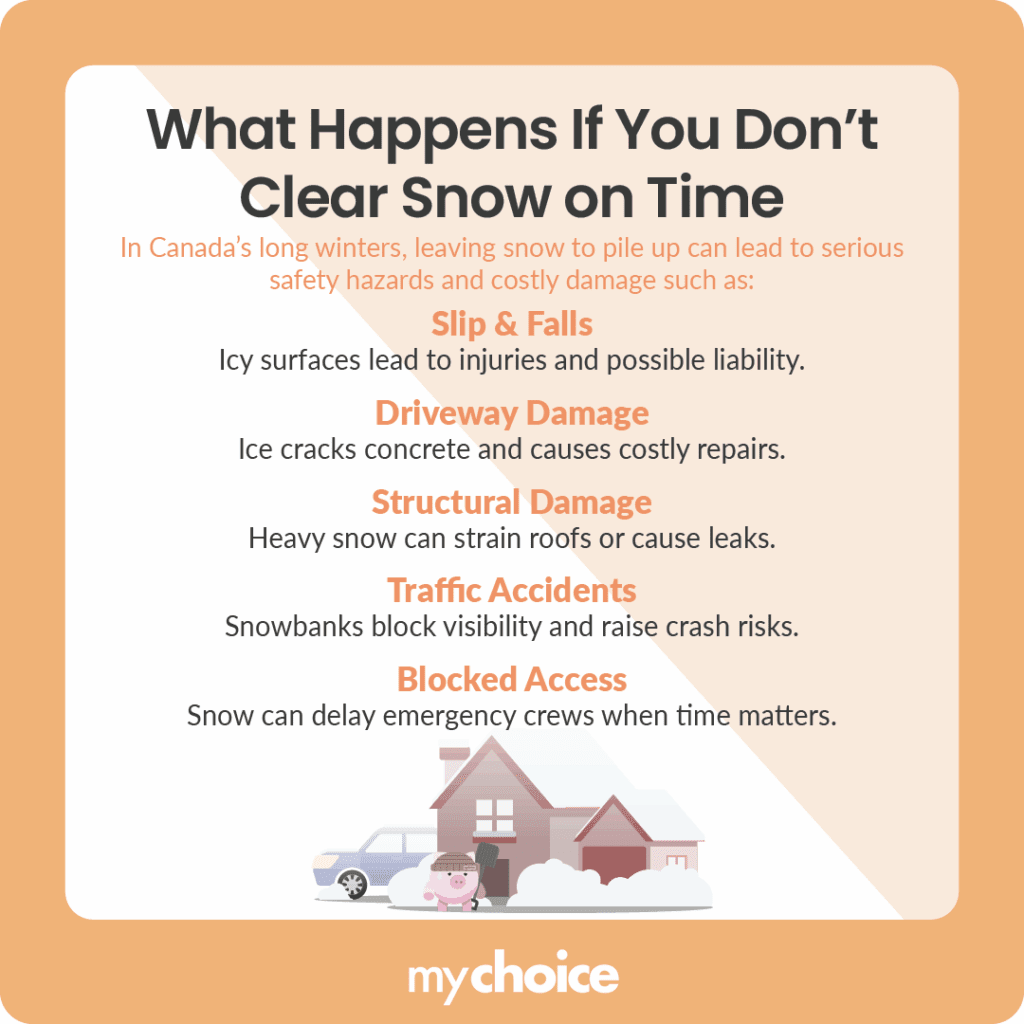As a homeowner, winter months can be a worrying time because fallen snow can cause injuries or damage to your home. What happens if you don’t remove snow regularly during snowy months, and how can you safely remove it from your home? Keep reading to learn more.
What’s the Risk of Not Removing Snow on Time?
In Canada, approximately 65% of the country has annual snow cover for more than 6 months. With snowfall a frequent sight in many Canadian cities, it’s important to remember that accumulated snow can be very heavy and lead to structural damage to your house. A snow load alert from the Ontario government states that a cubic foot of new, dry snow weighs approximately 7 pounds, whereas a cubic foot of old, compacted snow can weigh 30 pounds.
Uncleared snow on your roof and driveway can lead to many unwanted safety incidents that could hurt you or those around you. Here are some of the most common risks that might stem from unremoved snow:

Recognizing Early Signs Your Roof Is Under Stress
Leaving snow on your roof for a long time can cause stress, damage, and, in extreme cases, a full roof collapse. Therefore, it’s very important to recognize the early signs that your roof is under stress due to snow accumulation. The critical indicators of roof stress are as follows:
How to Safely Remove Roof Snow
Investing in a roof rake is one of the most effective ways to prevent snow from piling up on your roof. Roof rakes are shovel-like devices with long, telescoping handles that help you reach the top of your roof and remove snow. It’s a good idea to remove snow from your roof regularly, leaving about 2 to 3 inches, since removing it all might damage your shingles.
Alternatives to roof racks include calcium chloride tablets, which dissolve ice and snow without leaving lasting effects like salt, or heating cables, which melt the surrounding ice and snow.
That being said, roof snow removal is rarely a single-scenario effort. Here are some everyday roof snow situations, how to best approach each, and the associated risk levels.
| Situation | Recommended approach | Risk level |
|---|---|---|
| < 10 cm powder snow | Roof rake | Low |
| > 15 cm wet/heavy snow | Roof rake | Low |
| Ice dams forming | Roof rake, hot water, heat cables, or calcium chloride | Medium to high |
| Icicles and sagging gutters | Call a professional | High |
An important thing to note is that you shouldn’t walk on your roofs unless you have professional training. Even with a lifeline, walking on roofs is risky and may result in injuries.
Insurance Angle: What’s Covered (and What Isn’t)
Generally speaking, your standard home insurance policy does cover snow-related damage, including ceiling damage, winter storms, and roof collapses. The coverage usually protects your home’s structure and its contents.
However, the case might be different if your home gets damaged by water from snow melts, since it may fall under the purview of overland flooding or above-ground water coverage, which may not be part of your standard insurance coverage.
Note that different insurance providers have different coverage plans and packages, so what falls under standard home insurance with one company may be an add-on or endorsement at another. We recommend double-checking with the company’s representative to get a definitive answer.
When to Hire a Professional (and What to Ask For)
Generally, it’s a good idea to hire a professional snow removal service if it’s too risky for you to remove snow by yourself or if you don’t want to go through the trouble of doing so. It’s also a good idea to hire a professional snow removal service if your property is too large to manage on your own or the snow has become too heavy to remove safely.
Important questions to ask your snow removal service include:
- Their service price.
- How they remove the snow.
- Their certificates and qualifications.
- Their list of services.
Key Advice from MyChoice
- To get the most value out of your insurance policy in Atlantic Canada, learn what risks are common in your area and get the proper insurance coverage options to counter them.
- Protect your home from extensive damage by implementing weather-resistant measures and materials.
- Keep a close eye on local news and alerts so you’re not caught off guard when an extreme weather incident is about to occur.








